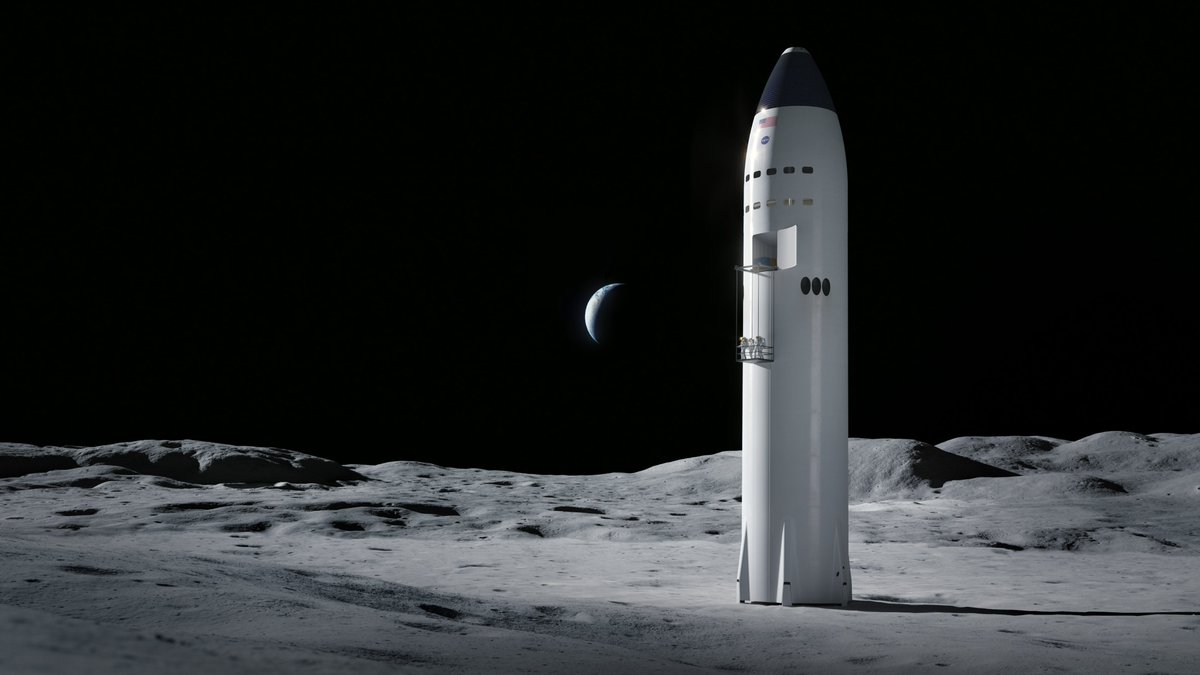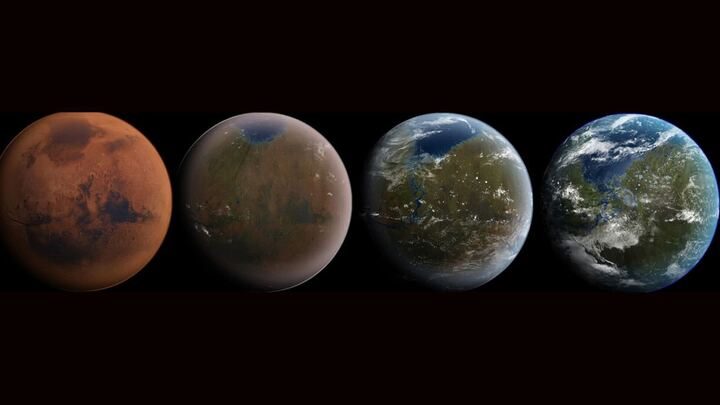
Elon Musk doesn't think NASA's 2024 moon-landing goal is out of reach.
The space agency is working to get people back to the moon via its Artemis program, which aims to establish a long-term, sustainable human presence on and around Earth's nearest neighbor by the end of the 2020s.
In 2019, the Trump administration directed NASA to make the first crewed Artemis landing by 2024. Experts have generally viewed that target as overly ambitious, and it's unclear whether the timeline will hold under President Joe Biden. But Musk, SpaceX's billionaire founder and CEO, thinks it is indeed achievable with the company's Starship deep-space transportation system, which NASA recently selected as Artemis' crewed moon lander.
Related: NASA unveils plan for Artemis 'base camp' on the moon beyond 2024
"I think it will happen. I think 2024 seems likely," Musk said Friday morning (April 23) in a news conference after the successful launch of SpaceX's Crew-2 mission, which is sending four astronauts to the International Space Station under a contract with NASA's Commercial Crew Program.
"We're gonna aim for sooner than that," he added.
Indeed, Musk said he thinks Starship — a giant, reusable rocket-spaceship combo — could be flying people regularly by 2023.
Get the Space.com Newsletter
Breaking space news, the latest updates on rocket launches, skywatching events and more!
"Obviously, we need to, like, not be making craters," he said with a laugh. "Got some work to do, but making rapid progress. We've got to make sure we're accelerating the rate of innovation, and then it could be ready in a couple years."
The craters remark is a reference to the Starship test-flight campaign, which has been quite explosive recently. Since December 2020, SpaceX has conducted four high-altitude test flights of Starship prototypes at the company's South Texas facilities. All four vehicles performed well for most of the flight, but none of them managed to stick the landing (though one did touch down in one piece, only to explode a few minutes later).
Related: SpaceX's Starship and Super Heavy rocket in pictures
Those flights involved iterations of the 165-foot-tall (50 meters) Starship spacecraft, which is known (somewhat confusingly) as Starship. The giant first-stage rocket that will launch Starship off Earth is called Super Heavy. SpaceX has built a Super Heavy prototype but has not yet flown one.
SpaceX is getting set to take another crack at the Starship high-altitude test flight. The latest prototype, named SN15 ("Serial No. 15"), is on the pad in South Texas, going through a series of preflight checkouts.
Musk acknowledged that his target timelines tend to be optimistic and should be taken "with a grain of salt." But the occasion of today's news conference offers some reason for optimism, highlighting as it did SpaceX's human spaceflight achievements (albeit with a different transportation system, the Falcon 9 rocket and Crew Dragon capsule). With Crew-2 safely on its way to the space station, SpaceX has now launched three crewed missions to Earth orbit in less than 12 months.
Mike Wall is the author of "Out There" (Grand Central Publishing, 2018; illustrated by Karl Tate), a book about the search for alien life. Follow him on Twitter @michaeldwall. Follow us on Twitter @Spacedotcom or Facebook.
Join our Space Forums to keep talking space on the latest missions, night sky and more! And if you have a news tip, correction or comment, let us know at: community@space.com.

Michael Wall is a Senior Space Writer with Space.com and joined the team in 2010. He primarily covers exoplanets, spaceflight and military space, but has been known to dabble in the space art beat. His book about the search for alien life, "Out There," was published on Nov. 13, 2018. Before becoming a science writer, Michael worked as a herpetologist and wildlife biologist. He has a Ph.D. in evolutionary biology from the University of Sydney, Australia, a bachelor's degree from the University of Arizona, and a graduate certificate in science writing from the University of California, Santa Cruz. To find out what his latest project is, you can follow Michael on Twitter.
